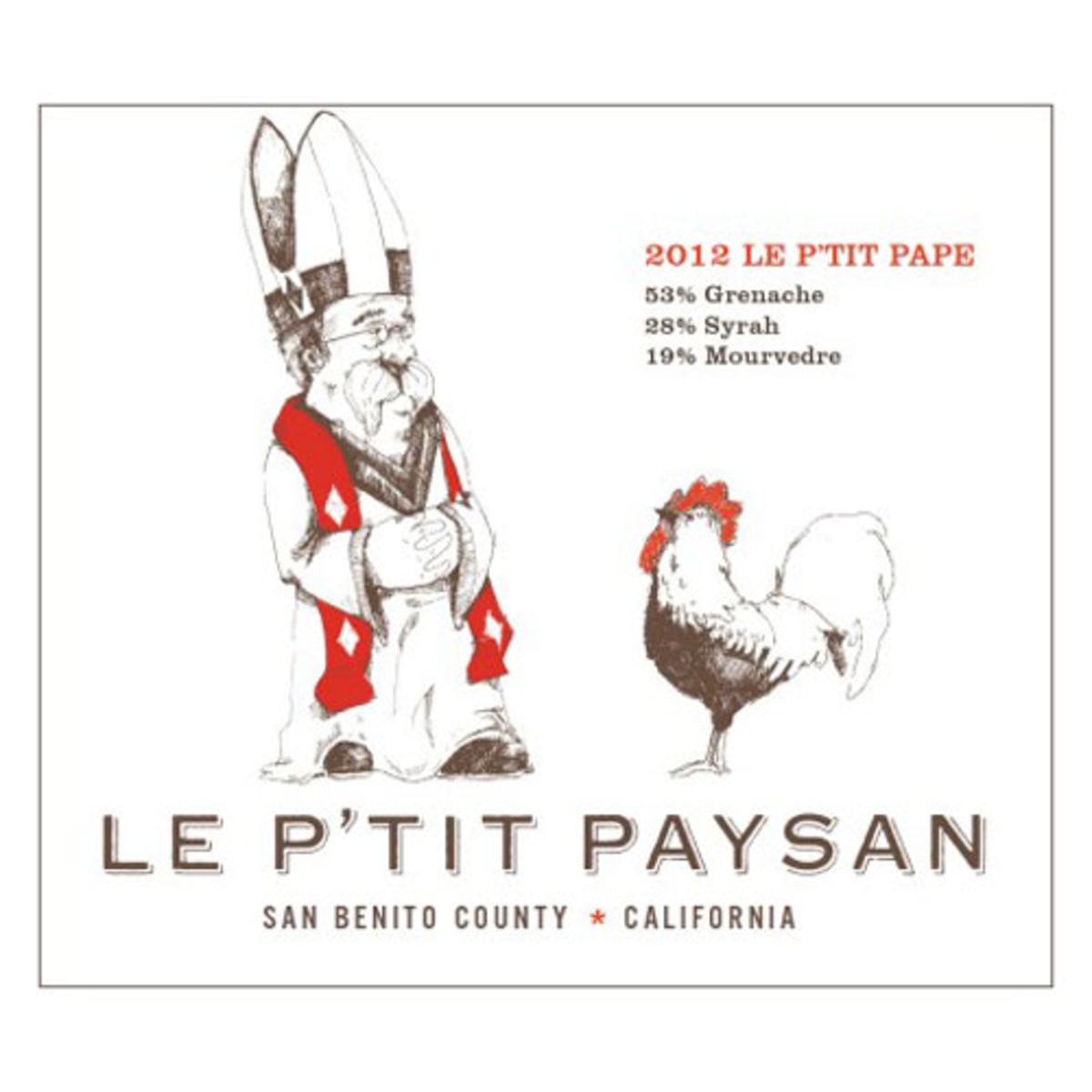Paysan Le P'tit Pape 2012
-
Wine
Enthusiast


Product Details
Your Rating
Somm Note
Winemaker Notes
Blend: 53% Grenache, 28% Syrah, 19% Mourvdre
Professional Ratings
-
Wine Enthusiast
Ian Brand’s fun and wallet-friendly blend of 53% Grenache, 28% Syrah and 19% Mourvèdre offers an interesting nose of charred beef, anise, beets, red rose petals, hints of purple fruit and a judicious touch of asphalt. The dark flavors of black licorice, black pepper, pencil lead and dried violets surround a boysenberry core, but remain light on the palate.
Other Vintages
2018-
Wine
Enthusiast -
Wilfred
Wong
-
Wine
Enthusiast
-
Wine
Enthusiast -
Wine
Spectator
-
Wine
Spectator
-
Wilfred
Wong
-
Wine
Spectator
-
Wine
Enthusiast

The Le P’tit Paysan label is ‘Village’ wines reimagined for California. They take vineyards and lots that, for whatever reason, aren’t ready to stand on their own and we compose them into terroir specific, eminently drinkable wines that belong on your table. These wines are made with the same attention to detail that graces our single vineyard offerings, specific site selection, open top fermentation (reds) or whole cluster pressing (whites), a focus on endemic fermentations, no enzymes, no fining, gentle filtration only as needed. Easy to drink but subtly serious, easy to pair but lovely on their own, demurring complexity, bright acidity, clean and fresh as the ocean air that blows in daily off the Monterey Bay.
Ian and Heather Brand began their family winery with pennies and a dream in 2007 while working in the cellars, vineyards and management of other wineries. In 2008, they moved to Salinas in Monterey County so Ian could focus on the winery while consulting, hustling and doing whatever work came his way. In 2010 they leased out half of an existing winery. In 2013 they built out their own production space in the industrial district of Salinas. They’ve expanded the space twice since then. Along the way, they’ve uncovered potential in regions and vineyards largely forgotten by the greater wine industry, grown fruitful relationships with local growers (while working tirelessly to promote low input and organic viticulture), and developed a winemaking style suited to the rocky, windswept Monterey Coast. In 2018, Ian was named the San Francisco Chronicle Winemaker of the Year.

With bold fruit flavors and accents of sweet spice, Grenache, Syrah and Mourvèdre form the base of the classic Rhône Red Blend, while Carignan, Cinsault and Counoise often come in to play. Though they originated from France’s southern Rhône Valley, with some creative interpretation, Rhône blends have also become popular in other countries. Somm Secret—Putting their own local spin on the Rhône Red Blend, those from Priorat often include Merlot and Cabernet Sauvignon. In California, it is not uncommon to see Petite Sirah make an appearance.

The largest and perhaps most varied of California’s wine-growing regions, the Central Coast produces a good majority of the state's wine. This vast California wine district stretches from San Francisco all the way to Santa Barbara along the coast, and reaches inland nearly all the way to the Central Valley.
Encompassing an extremely diverse array of climates, soil types and wine styles, it contains many smaller sub-AVAs, including San Francisco Bay, Monterey, the Santa Cruz Mountains, Paso Robles, Edna Valley, Santa Ynez Valley and Santa Maria Valley.
While the Central Coast California wine region could probably support almost any major grape varietiy, it is famous for a few Central Coast reds and whites. Pinot Noir, Chardonnay, Cabernet Sauvignon and Zinfandel are among the major ones. The Central Coast is home to many of the state's small, artisanal wineries crafting unique, high-quality wines, as well as larger producers also making exceptional wines.